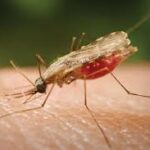Fibroids: Causes, Treatments, and Management

Introduction
Fibroids, also known as uterine leiomyomas, are benign tumors that arise from the smooth muscle tissue of the uterus. They are among the most common pelvic tumors in women, particularly during their reproductive years. Understanding fibroids involves delving into their causes, symptoms, and the range of treatment options available, including both conventional (orthodox) medical treatments and home remedies.
Understanding Fibroids
Fibroids are non-cancerous growths that can develop in the uterine wall. They can vary significantly in size, shape, and number, and their presence is often asymptomatic. However, they can sometimes lead to significant health issues, depending on their location and size. Common symptoms of fibroids include heavy menstrual bleeding, pelvic pain, frequent urination, and complications during pregnancy or labor.
Causes of Fibroids
The exact cause of fibroids remains unclear, but several factors are believed to contribute to their development:
- Hormonal Factors: Estrogen and progesterone, two key hormones involved in the menstrual cycle, play a significant role in fibroid growth. These hormones stimulate the uterine lining and are thought to influence fibroid development. Fibroids often shrink after menopause when hormone levels decrease, indicating a clear link between hormones and fibroid growth.
- Genetic Factors: A family history of fibroids can increase the likelihood of developing them. Genetic predisposition plays a role, with some genetic mutations being associated with fibroid development.
- Lifestyle Factors: Certain lifestyle choices and factors may influence the likelihood of developing fibroids. For instance, obesity is linked to an increased risk of fibroids, potentially due to higher levels of circulating estrogen in overweight individuals. Additionally, a diet low in fruits and vegetables and high in red meat has been associated with a higher risk of fibroids.
- Reproductive Factors: Early onset of menstruation and having a first child at an older age are also linked with a higher risk of fibroids. Women who have never been pregnant may have an increased risk of developing fibroids.
- Other Factors: Environmental factors, such as exposure to endocrine disruptors and certain chemicals, may also contribute to the development of fibroids.
Orthodox (Conventional) Treatments for Fibroids
Orthodox treatments for fibroids aim to relieve symptoms, manage complications, and, in some cases, remove the fibroids. The choice of treatment depends on factors such as the size, number, and location of the fibroids, as well as the patient’s overall health and reproductive plans.
- Medications: Several medications are used to manage fibroids and their symptoms:
- Hormonal Therapies: Birth control pills, hormone-releasing intrauterine devices (IUDs), and progestin-only medications can help control bleeding and pain. They do not eliminate fibroids but can manage symptoms.
- Gonadotropin-Releasing Hormone (GnRH) Agonists: These drugs, such as leuprolide, can shrink fibroids by lowering estrogen levels. They are often used short-term due to side effects and are typically used before surgery.
- Anti-Fibrinolytics: These medications help reduce heavy menstrual bleeding by minimizing blood loss. Examples include tranexamic acid.
- Non-Steroidal Anti-Inflammatory Drugs (NSAIDs): Medications like ibuprofen can help manage pain associated with fibroids.
- Surgical Treatments:
- Myomectomy: This is the surgical removal of fibroids while preserving the uterus. It is a common choice for women who wish to retain their fertility.
- Hysterectomy: This is the complete removal of the uterus and is considered when fibroids are large, numerous, or cause significant symptoms. This procedure is definitive and eliminates the possibility of fibroids recurring.
- Uterine Artery Embolization (UAE): This minimally invasive procedure involves blocking the blood supply to the fibroids, causing them to shrink. UAE is often used for women who do not wish to undergo major surgery.
- Endometrial Ablation: This procedure removes or destroys the lining of the uterus to reduce heavy menstrual bleeding. It is usually considered for women who have finished their family planning.
- Non-Surgical Interventions:
- MRI-guided Focused Ultrasound (MRgFUS): This is a non-invasive procedure that uses high-intensity ultrasound waves to destroy fibroid tissue. It is guided by MRI imaging to target specific areas.
Home and Alternative Treatments for Fibroids
While conventional treatments are effective, some women seek alternative or complementary therapies to manage fibroid symptoms or improve their overall well-being. These methods can be used alongside orthodox treatments or as part of a holistic approach.
- Diet and Nutrition:
- Anti-Inflammatory Diet: Consuming a diet rich in anti-inflammatory foods, such as fruits, vegetables, whole grains, and fatty fish, may help reduce fibroid-related inflammation and support overall health.
- Reducing Red Meat: Some studies suggest that reducing the intake of red meat and increasing the consumption of fruits and vegetables can be beneficial.
- Green Tea: The antioxidants in green tea may help inhibit fibroid growth, though more research is needed to confirm these effects.
- Herbal Remedies:
- Vitex (Chaste Tree): Vitex is believed to help balance hormones and may be beneficial for managing fibroid symptoms.
- Milk Thistle: Known for its liver-supportive properties, milk thistle may help with hormone regulation.
- Turmeric: Its anti-inflammatory properties may help manage symptoms, although evidence specific to fibroids is limited.
- Lifestyle Modifications:
- Regular Exercise: Maintaining a healthy weight and regular exercise can help manage symptoms and reduce overall estrogen levels in the body.
- Stress Management: Practices such as yoga, meditation, and deep breathing exercises can help manage stress, which may indirectly benefit those with fibroids.
- Acupuncture: Some women find relief from fibroid symptoms through acupuncture, which is believed to help regulate hormones and improve overall uterine health.
- Essential Oils: Certain essential oils, such as lavender and chamomile, are thought to help with pain relief and relaxation. However, scientific evidence supporting their effectiveness for fibroids is limited.
Conclusion
Fibroids are a common and often manageable condition, with a range of treatments available to address their symptoms and impact. Conventional treatments, including medications, surgical interventions, and non-surgical procedures, offer effective options for managing fibroids based on individual needs and circumstances. Complementary home and alternative treatments, such as dietary changes, herbal remedies, and lifestyle modifications, can also play a supportive role in managing symptoms and improving overall well-being.
Ultimately, the choice of treatment should be personalized, taking into account the size and location of the fibroids, the severity of symptoms, and the patient’s overall health and preferences. Consulting with a healthcare provider is crucial in determining the most appropriate course of action and ensuring a comprehensive approach to managing fibroids.



